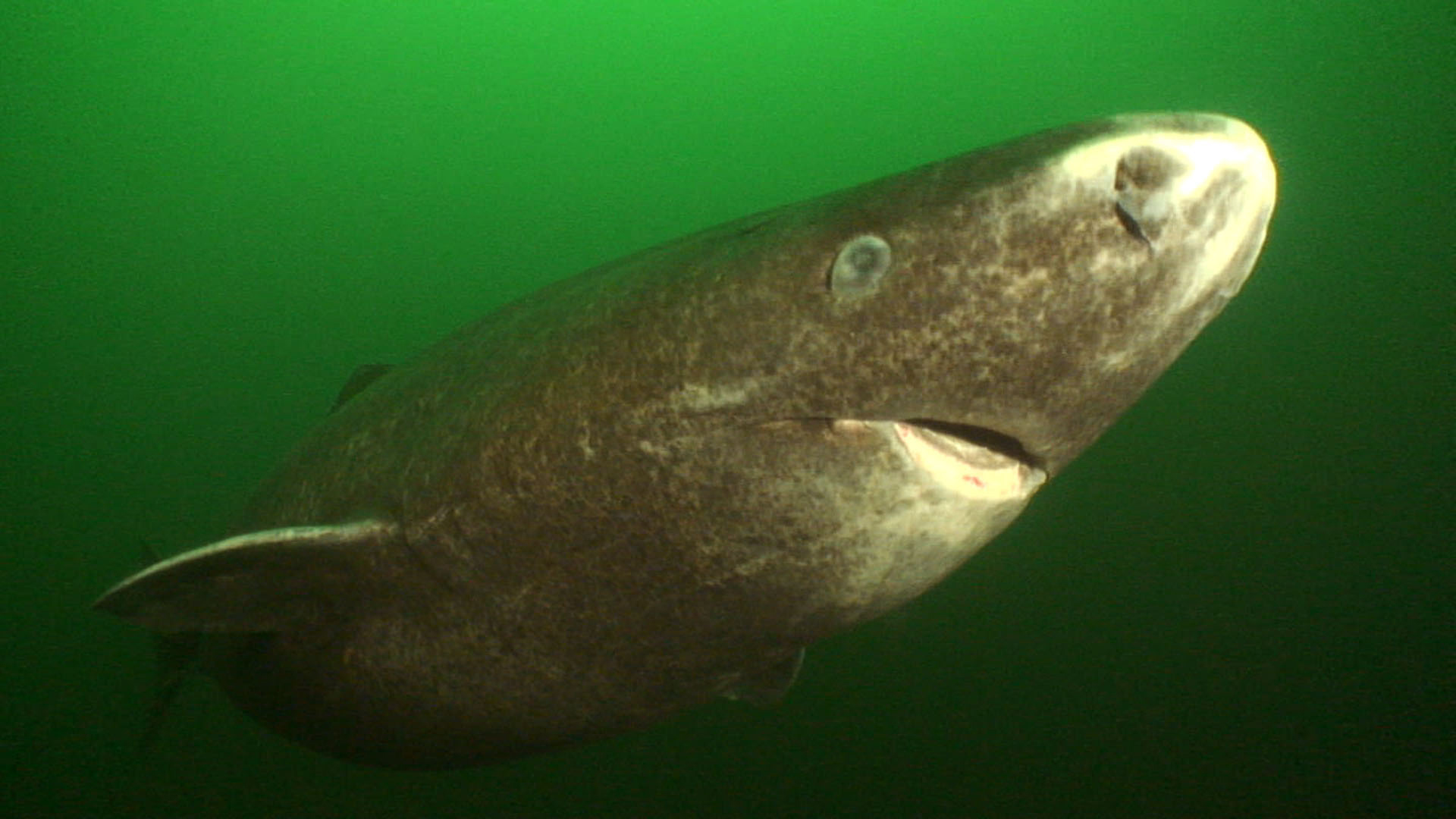
After a recent study discovered a female Greenland shark estimated to be 400 years old, the species has been declared the longest-living vertebrates on the planet, smashing the previous record holder, a 211-year-old bowhead whale, right out of the water.
Researchers from the University of Copenhagen in Denmark used radiocarbon dating techniques to figure out the ages of 28 of the animals, with one extraordinarily long-in-the-tooth lady shark winning the most candles on the cake award. If she had indeed completed 400 laps of the sun, the shark would have hatched in 1616, the year William Shakespeare died, and would have been a mere pup of 50 years during the Great Fire of London—not that such events would have unduly concerned her.
One of the largest species in the Northern hemisphere, these big old fish can reach lengths of five metres, despite only growing an average of 1cm a year. While they may have mastered the secret of longevity, however, life for a Greenland shark is far from one long party. The species doesn’t reach sexual maturity until the tender age of 150, for one thing, and they spend most of their extended existence swimming very slowly through the frigid, deep waters of the North Atlantic.
Believe it or not, it’s not easy telling a shark’s age. With some fish, scientists can simply cut them open, do a cross section of the ear bones (called otoliths), and count the rings, as you would when assessing the age of a tree. However, this technique doesn’t work for sharks. The ages of some species, like the great white, can be determined by measuring the calcified tissue that grows in layers on their back bones.
‘But the Greenland shark is a very, very soft shark,’ lead author and marine biologist Julius Nielsen told the BBC. ‘It has no hard body parts where growth layers are deposited. So it was believed that the age could not be investigated.’
So Nielsen and his crew had to come up with a new plan, which they did by looking deep into the shark’s dead eyes. ‘The Greenland shark’s eye lens is composed of a specialised material, and it contains proteins that are metabolically inert,’ Mr Neilson explains. ‘Which means after the proteins have been synthesised in the body, they are not renewed any more. So we can isolate the tissue that formed when the shark was a pup, and do radiocarbon dating.’
The tests were done on animals killed as a result of fishing, and the findings, which were published in the journal Science, came as a shock even to those doing the study. ‘We had our expectations that we were dealing with an unusual animal,’ said Mr Nielsen. ‘But I think everyone doing this research was very surprised to learn the sharks were as old as they were.’
Radiocarbon dating doesn’t produce exact dates, so researchers say the shark could be anywhere between 272 and 512 years old, but she’s most likely to be somewhere in the middle of that range, so about 400 years old.
‘Even with the lowest part of this uncertainty, 272 years, even if that is the maximum age, it should still be considered the longest-living vertebrate,’ said Mr Nielsen. But if she was born in 1504, which is possible, that would make the shark even older than the 507-year-old clam called Ming, who holds the title of most aged animal.
[geoip-content not_country=”CA”]
ON THE APP
 Sixgill Shark: Into the Abyss
Sixgill Shark: Into the Abyss
Meet another enigma of the deep: the sixgill shark, a primitive giant predator, rarely encountered by divers. For Natali Tesche-Ricciardi, finding this elusive shark is the ultimate challenge. Follow her as she dives into the treacherous Messina Strait in search of a mesmerizing encounter with this forgotten goliath of the abyss.
Want to watch Sixgill Shark: Into the Abyss for free right now? Subscribe to the Love Nature streaming app and start your 30-day free trial of the best on-demand natural history documentaries out there. [/geoip-content]

